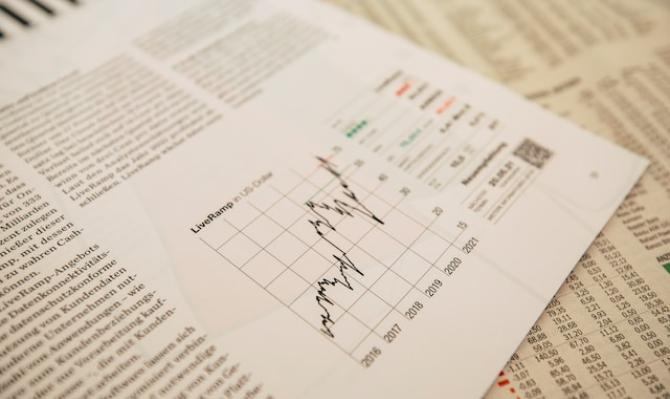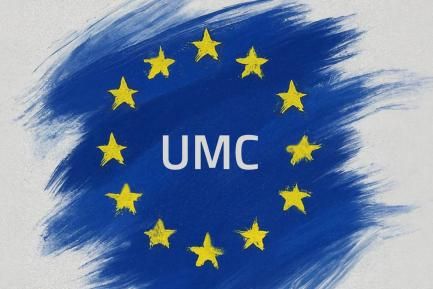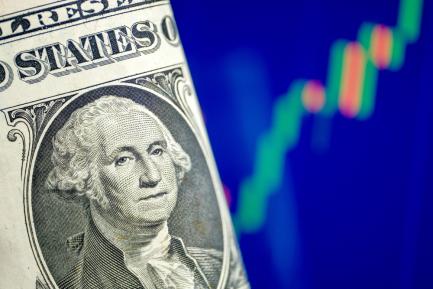Is monetary policy managing to cool economic activity? A first assessment
In its battle against inflation, monetary policy has tightened considerably, as is clearly visible in official interest rates and those faced by businesses, households and governments. But these interest rates are not an end in themselves; rather, the ultimate goal is to cool economic activity and thus curb inflation. In this article, we have analysed the state of monetary policy transmission through one of its main channels: credit conditions.

In its battle against inflation, monetary policy has tightened considerably, as is clearly visible in official interest rates and those faced by businesses, households and governments. But these interest rates are not an end in themselves; rather, the ultimate goal is to cool economic activity and thus curb inflation. With this in mind, we have analysed the state of monetary policy transmission through one of its main channels: credit conditions.
The Fed and ECB rate hikes (+500 bps and +375 bps, respectively) have resulted in a tightening of credit standards and weaker demand for credit. This is reflected in the latest banking sector surveys conducted by the Fed and the ECB (in particular, the BLS in Europe and the SLOOS in the US).1 Not only do they capture this accumulated tension up to Q1 2023, but in the case of the euro area survey it also suggests that the peak may have already been reached and that we could see a slowdown in the pace of the tightening process in Q2 2023 (this would be consistent with expectations that the Fed and ECB’s official rates have already reached their peak or are close to doing so).2
- 1. Bank Lending Survey (BLS) and Senior Loan Officer Opinion Survey on Bank Lending Practices (SLOOS).
- 2. Specifically, in Europe, the BLS captures the state of credit standards and the demand for credit in the current quarter and expectations for the next one. Abnormally, in Q1 2023 the actual situation ended up being more severe than had been anticipated in Q4 2022. However, this occurred in a context of turbulence surrounding Silicon Valley Bank. Generally speaking, BLS expectations are a very good predictor of future patterns.

In this context of higher rates, stricter lending standards and lower demand, we would expect to observe less buoyancy in credit volumes. Therefore, it is useful to analyse the pattern of so-called «credit impulse», which we define as the change in the balance of outstanding credit minus its change in the same period of the previous year (as a percentage of nominal GDP).3 This measure has a close correlation with GDP growth and allows us to assess credit dynamics in terms of their importance for economic activity.4 In recent months, credit impulse has deteriorated. Most notably, it has done so to a degree that is commensurate with the tightening observed in credit standards and demand, which also suggests that the transmission of the monetary tightening strategy pursued by the Fed and the ECB has been successful.
- 3. See W.L. Barcelona et al. (2022). «What Happens in China Does Not Stay in China». Fed International Finance Discussion Papers.
- 4. Intuitively, the outstanding balance of credit is especially associated with past economic activity, while new lending issued in a given quarter is associated with the economic activity of that quarter.

In Europe, if the reduced tension in credit standards and lower demand predicted by the surveys end up being confirmed, then credit impulse will remain negative over the coming months, albeit slightly less so than in Q1 (specifically, the BLS expectations for Q2 predict an improvement in credit impulse of between 0.5 and 1.0 pps). In the case of the US, meanwhile, the SLOOS suggests that in the next quarter these credit conditions could tighten further still, which could reduce credit impulse by at least 0.2 pps.


If the transmission of monetary policy to credit impulse is proving effective, both in the US and in the euro area, then the question that remains is to what extent and with what time lag will this channel cool economic activity. The time lags are uncertain and variable, as prominent ECB and Fed members continue to stress,5 but the close correlation between credit impulse and GDP growth offers us clues about the possible impact. To assess the magnitude of the potential cooling, we used a statistical model that predicts GDP growth based on its latest level and the contemporary credit impulse. The model is simple, but it is useful for explaining the correlation between the two measures and it suggests that credit plays an important role in determining GDP growth.6 According to this exercise, the drop in credit impulse already observed, and assuming zero impulse in the coming quarters, would be associated with a reduction in GDP growth of 0.7 pps in both the euro area and the US.7 If the impulse over the coming quarters evolves in line with the latest surveys for Q2, then according to this exercise GDP growth for 2023 as a whole would be 1.5 pps less in the euro area and 2.1 pps less in the US.8
- 5. See the speech by the Federal Reserve Governor Philip N. Jefferson of 18 May 2023, The U.S. Economic Outlook and Considerations for Monetary Policy.
- 6. The R-squares for the US and the euro area are 0.85 and 0.64, respectively, all variables are significant at 1%, and the estimated ratios for credit impulse are similar in magnitude to those corresponding to the time lag of GDP growth.
- 7. In both cases, compared to a scenario where credit impulse was exactly 0 in 2023 (i.e. a scenario where the growth in the volume of the outstanding balance of credit was equal to that of 2022).
- 8. In the US, we would see a tightening of credit conditions consistent with what was expected in the latest SLOOS, while in the euro area we assume that the maximum tightening has already occurred.

Finally, beyond this simple exercise, a tightening of credit conditions could be affected by vulnerabilities in certain sectors. In this regard, one of the concerns is focused on the US and the high exposure of its regional banks to the commercial real estate sector, given the setbacks this sector has suffered so far this year and the fact that, in an environment of high rates, the outlook remains challenging. As an illustration, of all the credit issued by small banks in the US, 47% goes to this sector, whereas in the case of the big banks this figure drops to 16%. On the other hand, of the total credit granted to the commercial real estate sector, 67% is held by small banks, which are precisely the ones which suffered the most during the financial turbulence of March.

- 1. Bank Lending Survey (BLS) and Senior Loan Officer Opinion Survey on Bank Lending Practices (SLOOS).
- 2. Specifically, in Europe, the BLS captures the state of credit standards and the demand for credit in the current quarter and expectations for the next one. Abnormally, in Q1 2023 the actual situation ended up being more severe than had been anticipated in Q4 2022. However, this occurred in a context of turbulence surrounding Silicon Valley Bank. Generally speaking, BLS expectations are a very good predictor of future patterns.
- 3. See W.L. Barcelona et al. (2022). «What Happens in China Does Not Stay in China». Fed International Finance Discussion Papers.
- 4. Intuitively, the outstanding balance of credit is especially associated with past economic activity, while new lending issued in a given quarter is associated with the economic activity of that quarter.
- 5. See the speech by the Federal Reserve Governor Philip N. Jefferson of 18 May 2023, The U.S. Economic Outlook and Considerations for Monetary Policy.
- 6. The R-squares for the US and the euro area are 0.85 and 0.64, respectively, all variables are significant at 1%, and the estimated ratios for credit impulse are similar in magnitude to those corresponding to the time lag of GDP growth.
- 7. In both cases, compared to a scenario where credit impulse was exactly 0 in 2023 (i.e. a scenario where the growth in the volume of the outstanding balance of credit was equal to that of 2022).
- 8. In the US, we would see a tightening of credit conditions consistent with what was expected in the latest SLOOS, while in the euro area we assume that the maximum tightening has already occurred.




